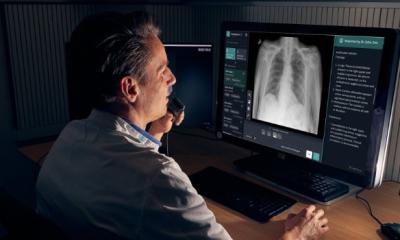
Sponsored • Tools: tracing, tracking, relocating
A truly smart children’s hospital
In a busy hospital, thousands of devices and equipment are on the move every hour of every day. Beds, blood pressure monitors, wheelchairs, or infusion pumps can be taken to different locations and, at times, even ‘lost’.
Keeping track of vital tools is a challenge, particularly given the massive throughput of patients and staff shift changes. However, innovative tracking systems are evolving that not only identify where items are, but they also prompt for redelivery to where they are next required. The Dutch Children’s Hospital in the Netherlands gave Fujitsu and partners the opportunity to provide a unique solution to track and trace hospital assets. This involves mobile tags, sensors and anchor nodes that automatically connect with one another to keep track of assets.

The initiative is part of a broader project to improve efficiency and quality of care throughout the hospital. Dennis van Doorn, Marketing Manager Wireless Solutions at Fujitsu, explained how Fujitsu is working on these projects.
From the first successful proof-of-concept pilot for tracing and tracking, a follow-up pilot is underway, with equipment connected through battery-powered asset tags that send a signal to a mesh network. As the mesh network can also dovetail with smart lighting systems, further opportunities were suggested. This progressed when it emerged that the Dutch Hospital was preparing a project to upgrade existing lighting to sustainable LED smart lighting – where, as part of the Fujitsu connectivity solution, that system can be interconnected with the other solutions offered.
The team began to imagine a smart light system throughout the hospital, connected wirelessly with mesh technology, sensors and asset tags. ‘By rolling out the whole infrastructure of lights, we can do asset tracking throughout the whole building very easily,’ van Doorn said. ‘From two different groups in the Dutch Hospital – one asking for asset tracking, the other for sustainable lighting – we are now suddenly offering much more.’
Due to renovation work, an empty ward presented an ideal opportunity – test bed location in which to install the technology and demonstrate its capabilities without impacting on care and other work. The total solution also includes decision-making software and dashboards for task management within the hospital; IoT Solutions can also benefit the patient and visitor experience – an indoor navigation solution has been added to guide and inform patients and visitors. The solution has been expanded to include energy-harvesting wireless switches that can be addressed to any action, such as a request for cleaning, a call nurse, etc. ‘We are feeding out asset tracking information and location information and visualising medical equipment on the floor plan for nurses and other staff,’ van Doorn said. ‘If stock levels in a certain area gets too low there will be a notification on the dashboard and staff mobile devices.’
Recommended article

Article • Hospital tracking system
Embracing technology to improve patient flow
Digital bed management systems being trialled in NHS hospitals to improve patient flow are showing early signs of success. Innovations such as patient tracking and real-time location of equipment and staff to help make hospital stays more efficient are being tested at 10 sites. Project leader Bernard Quinn is particularly optimistic about technology that monitors bed availability and patient flow.

With the proof-of-concept under way, four further pilot projects are being established at the hospital. One involves tracking the whereabouts of wheelchairs, others are on the geriatric and gynaecology wards to keep track of beds, infusion pumps and blood pressure measurement devices, while a further project is in a ‘smart operation theatre’.
‘There, we are going to connect occupancy sensors to the network, to see if we can save money on occupancy of operation rooms,’ van Doorn explained. ‘If nobody is detected, the lights and ventilation should not be on. We’re going to use sensor data combined with the operation schedule, to see if we can make it more efficient.’
A further proposed study will look at staff movements in intensive care, to remove unnecessary distractions and thereby allow patients to fully focus on recovery.
Future developments
With the flick of switch we can make a whole network work as an asset tracking network
Dennis van Doorn
‘We know it works and are already thinking further ahead with partners to provide an off-the-shelf solution to hospitals worldwide, because all hospitals are facing the same challenges.’
While several wi-fi based or radio frequency identification (RFID) track and trace systems exist, van Doorn believes the Fujitsu-led approach offers more flexibility to hospitals due to the firm’s ability to install a battery-powered network ‘within a few hours’. Additionally, hospitals upgrading to more sustainable lighting systems presents a further opportunity to install networks that dovetail with trace and track technology, he added. ‘With the flick of switch we can make a whole network work as an asset tracking network,’ he said. Sensors can enable smart light functions to act as an ‘eye’ to locate an asset and, for example, translate a call for a bed into action for its delivery to a specific ward.
As hospitals face greater pressures to increase efficiency, harnessing technology to trace, track, locate and deliver assets will not only benefit workflow but far more.
31.08.2019










